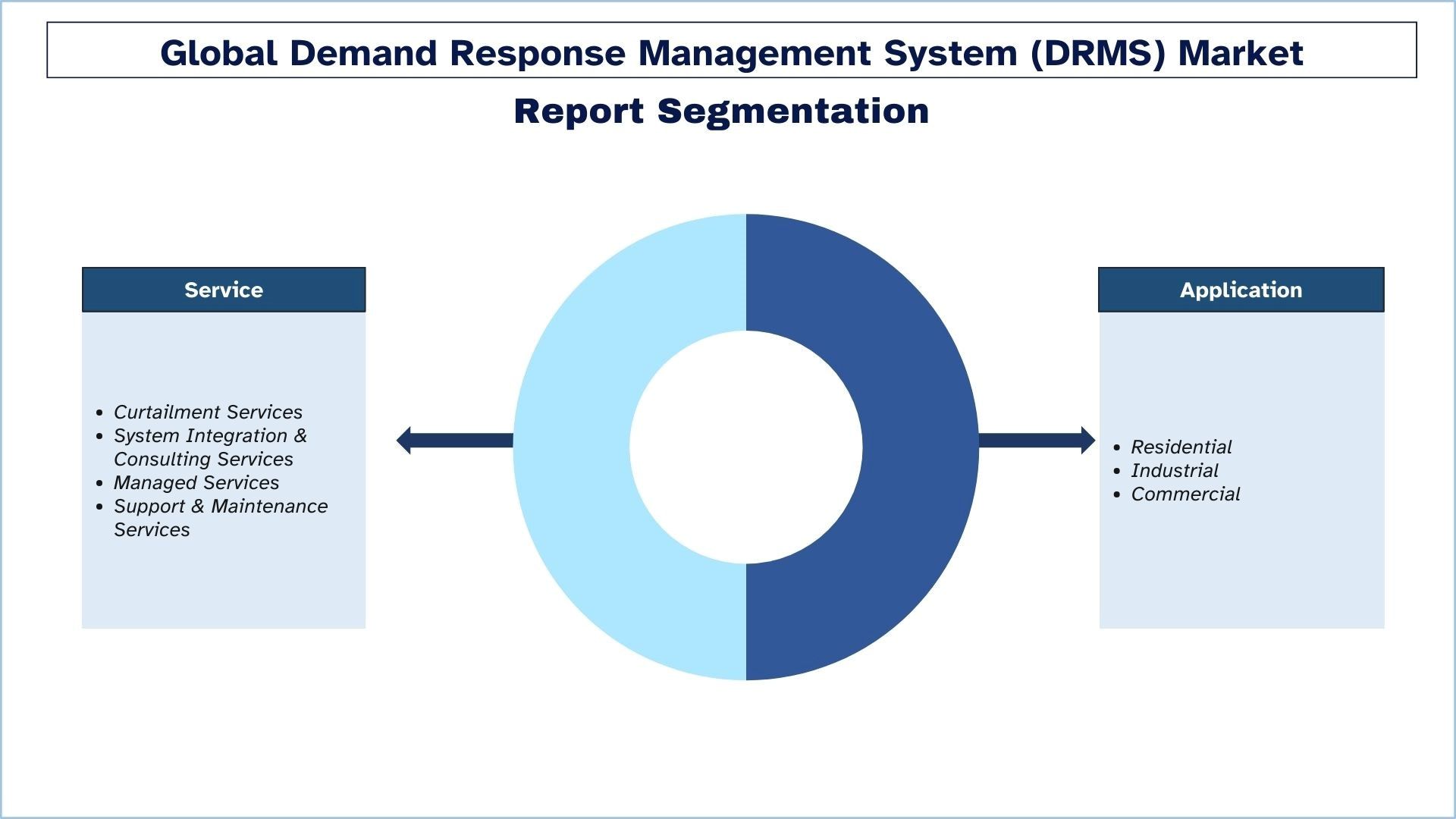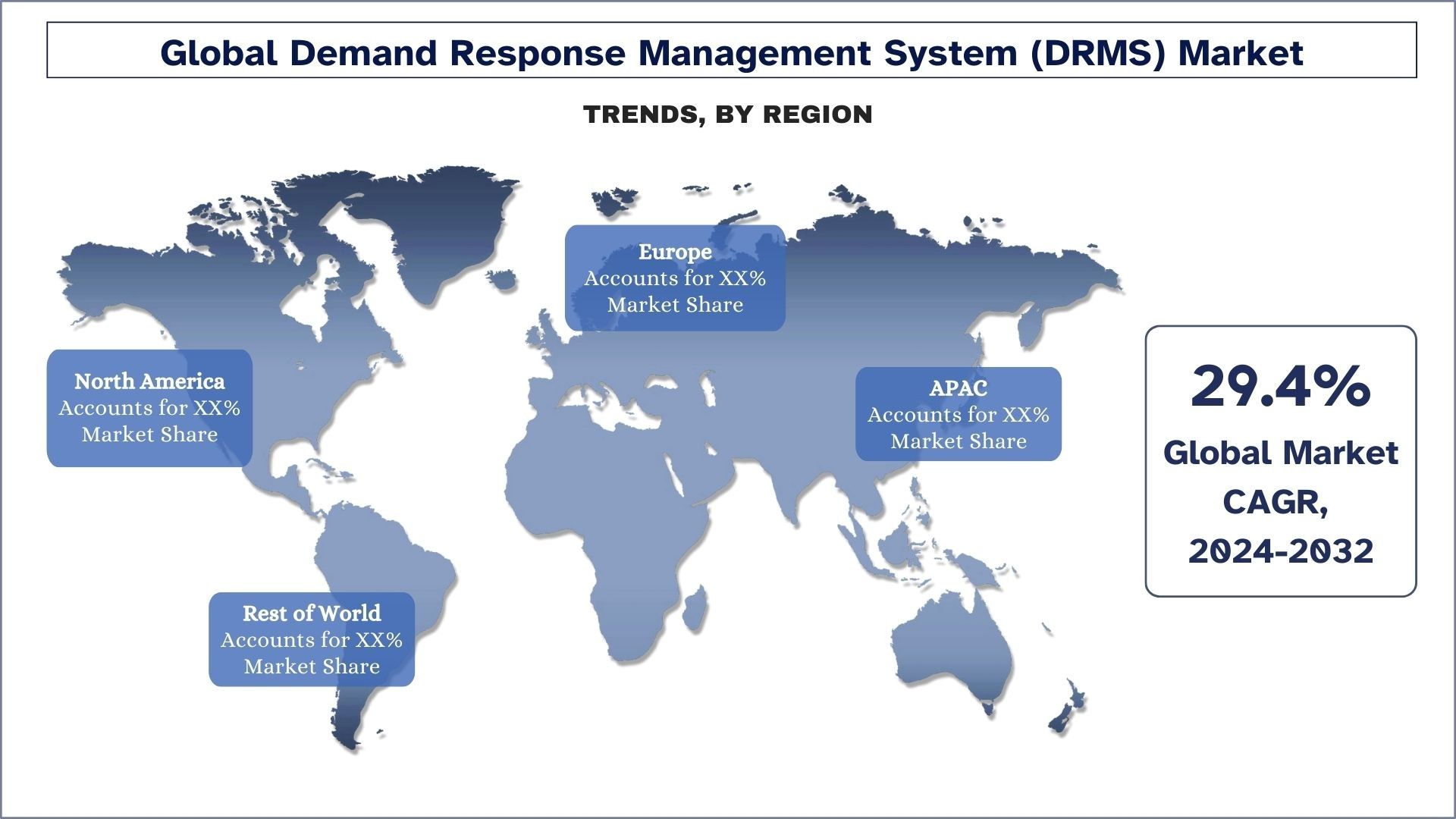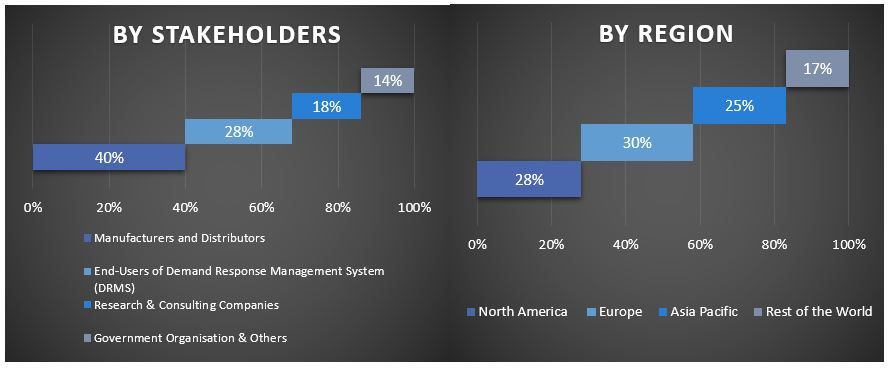Emphasis on Service (Curtailment Services, System Integration & Consulting Services, Managed Services, and Support & Maintenance Services); Application (Residential, Industrial, and Commercial); and Region/Country

The global response management system market was valued at USD 78.92 billion in 2023 and is expected to grow at a strong CAGR of around 29.4% during the forecast period (2024-2032) owing to the combination of DRMS with energy storage systems allowing utilities to manage supply-demand balance more effectively.
The demand response management system (DRMS) market is expected to have high growth due to the rising global energy demand, strict energy efficiency policies and trends, and integration of renewable energy technologies. DRMS helps to check and control power use in an innovative real-time manner for utilities and consumers to conserve energy and costs and increase demand-side management to support the grid in demand response. The use of innovative technologies including AI, IoT, and blockchain improves the system’s performance; the growth of renewable energy has made demand-side management more pronounced. Some of the key areas that apply DRMS are residential, commercial, and industrial areas where utilities and energy aggregators are major users. The market stays highly saturated, and the key participants aim to introduce new products and forge partnerships to address new energy challenges and requirements for compliance.
This section discusses the key market trends that are influencing the various segments of the global Demand Response Management System market, as found by our team of research experts.
Curtailment Services Segment Transforming Industry
The curtailment services category is expected to have the largest market share of the demand response management system market. This is mainly due to the utilities and grid operators being able to reduce and shift demand during peak times with consumers only through these services. It improves grid stability, cuts blackouts, and is important for industries with high energy requirements, providing monetary benefits for participation. The integration of renewable energy, which is intermittent, only increases the need for curtailment hence increasing the need for these solutions. This segment is enhanced due to regulatory requirements and energy market trends promoting demand-side management.

North America is expected to grow at a significant rate during the forecast period.
The North America’s DRMS market is among the most promising and innovative ones, primarily backed by sound energy infrastructure and favorable legislation. DRMS is being deployed by utilities and energy aggregators in the US and Canada to keep the reliability of the grid, manage peak demand, and incorporate renewable energy. Demand response incentives and policies and state and federal renewable portfolio standards are some of the main drivers. Technology improvements such as smart grids and IoT devices drive the popularization of DRMS in residential, commercial as well as industrial segments. At the same time, new EVs and distributed energy resources such as solar PV systems and batteries require flexible energy management. This means North America’s dedication to sustainability is helping propel innovation and keep the market.

The global demand response management system market is competitive, with several global and international market players. The key players are adopting different growth strategies to enhance their market presence, such as partnerships, agreements, collaborations, new product launches, geographical expansions, and mergers and acquisitions. Some of the major players in the market are ABB; Eaton; Enel X North America, Inc.; EnergyHub; GE Vernova; Honeywell International Inc; Itron Inc.; Johnson Controls; Landis+Gyr; and Siemens
Report Attribute | Details |
Base year | 2023 |
Forecast period | 2024-2032 |
Growth momentum | Accelerate at a CAGR of 29.4% |
Market size 2023 | USD 78.92 billion |
Regional analysis | North America, Europe, APAC, Rest of the World |
Major contributing region | North America is expected to dominate the market during the forecasted period. |
Key countries covered | U.S., Canada, Germany, U.K., Spain, Italy, France, China, Japan, and India |
Companies profiled | ABB; Eaton; Enel X North America, Inc.; EnergyHub; GE Vernova; Honeywell International Inc; Itron Inc.; Johnson Controls; Landis+Gyr; and Siemens |
Report Scope | Market Trends, Drivers, and Restraints; Revenue Estimation and Forecast; Segmentation Analysis; Demand and Supply Side Analysis; Competitive Landscape; Company Profiling |
Segments Covered | By Service; By Application; By Region/Country |
The study includes market sizing and forecasting analysis confirmed by authenticated key industry experts.
The report briefly reviews overall industry performance at one glance.
The report covers an in-depth analysis of prominent industry peers, primarily focusing on key business financials, type portfolios, expansion strategies, and recent developments.
Detailed examination of drivers, restraints, key trends, and opportunities prevailing in the industry.
The study comprehensively covers the market across different segments.
Deep dive regional level analysis of the industry.
The global demand response management system market can further be customized as per the requirement or any other market segment. Besides this, UMI understands that you may have your own business needs, hence feel free to contact us to get a report that completely suits your requirements.
1. Market Introduction
2. Research Methodology or Assumption
3. Executive Summary
4. Market Dynamics
5. Pricing Analysis
6. Global Demand Response Management System (Drms) Market Revenue (USD Bn), 2022-2032F
7. Market Insights By Service
8. Market Insights By Application
9. Market Insights By Region
10. Value Chain Analysis
11. Competitive Landscape
12. Company Profiled
13. Acronyms & Assumption
14. Annexure
Analyzing the historical market, estimating the current market, and forecasting the future market of the global Demand Response Management System market were the three major steps undertaken to create and analyze the adoption of Demand Response Management System in major regions. Exhaustive secondary research was conducted to collect the historical market figures and estimate the current market size. Secondly, to confirm these insights, numerous findings and assumptions were considered. Moreover, exhaustive primary interviews were conducted with industry experts across the value chain of the global Demand Response Management System market. For the assumption and validation of market numbers through primary interviews, we employed a top-down/bottom-up approach to forecasting the complete market size. Thereafter, market breakdown and data triangulation methods were adopted to estimate and analyze the market size of segments and sub-segments of the industry. The detailed method is explained below:
Step 1: In-Depth Study of Secondary Sources:
A detailed secondary study was conducted to obtain the historical market size of the global Demand Response Management System market through company internal sources such as annual reports & financial statements, performance presentations, press releases, etc., and external sources including journals, news & articles, government publications, competitor publications, sector reports, third-party database, and other credible publications.
Step 2: Market Segmentation:
After obtaining the historical market size of the global Demand Response Management System market, we conducted a detailed secondary analysis to gather historical market insights and share for different segments & sub-segments for major regions. Major segments are included in the report, such as Service, Application, and region. Further country-level analysis was conducted to evaluate the overall adoption of testing models in that region.
Step 3: Factor Analysis:
After buying the historical market size of different segments and sub-segments, we conducted a detailed factor analysis to estimate the current market size of the global Demand Response Management System market. Further, we conducted factor analysis using dependent and independent variables such as Service, Application, and global Demand Response Management System market regions. A thorough analysis of demand and supply-side scenarios was conducted considering top partnerships, mergers and acquisitions, business expansion, and product launches in the global Demand Response Management System market.
Current Market Sizing: Based on actionable insights from the above 3 steps, we arrived at the current market size, key players in the global Demand Response Management System market, and market shares of the segments. All the required percentage shares split, and market breakdowns were decided using the above-mentioned secondary approach and were verified through primary interviews.
Estimation & Forecasting: For market estimation and forecast, weights were assigned to several factors including drivers & trends, restraints, and opportunities available for the stakeholders. After analyzing these factors, relevant forecasting techniques, i.e., the top-down/bottom-up approach were applied to arrive at the market forecast for 2032 for different segments and sub-segments across the major markets globally. The research method adopted to estimate the market size encompasses:
The industry’s market size, in terms of revenue (USD) and the adoption rate of the global Demand Response Management System market across the major markets domestically
All percentage shares, splits, and breakdowns of market segments and sub-segments
Key players in the global Demand Response Management System market in terms of the types offered. Also, the growth strategies adopted by these players to compete in the fast-growing market.
Primary Research: In-depth interviews were conducted with the Key Opinion Leaders (KOLs) including Top Level Executives (CXO/VPs, Sales Head, Marketing Head, Operational Head, Regional Head, Country Head, etc.) across major regions. Primary research findings were then summarized, and statistical analysis was performed to prove the stated hypothesis. Inputs from primary research were combined with secondary findings, hence turning information into actionable insights.

The data triangulation technique was employed to complete the overall market estimation and to arrive at precise statistical numbers for each segment and sub-segment of the global Demand Response Management System market. Data was split into several segments and sub-segments after studying various parameters and trends in the global Demand Response Management System market's Service, Application, and regions.
The current & future market trends of the global Demand Response Management System market were pinpointed in the study. Investors can gain strategic insights to base their discretion for investments on the qualitative and quantitative analysis performed in the study. Current and future market trends determined the market's overall attractiveness at a regional level, providing a platform for the industrial participant to exploit the untapped market to receive help from a first-mover advantage. Other quantitative goals of the studies include:
Analyze the current forecast and market size of the global Demand Response Management System market in terms of value (USD). Also, analyze the current forecast and market size of different segments and sub-segments.
Segments in the study include areas of Service, Application, and regions.
Define and analyze the regulatory framework for the industry.
Analyze the value chain involved with the presence of various intermediaries, along with analyzing customer and competitor behaviors of the industry.
Analyze the current and forecast market size of the global Demand Response Management System market for the major regions.
Major countries of regions studied in the report include Asia Pacific, Europe, North America, and the Rest of the World
Company profiles of the global Demand Response Management System market and the growth strategies the players adopt to sustain the fast-growing market.
Deep dive regional level analysis of the industry
Q1: What is the global Demand Response Management System market’s current market size and growth potential?
The global demand response management system market was valued at USD 78.92 billion in 2023 and is expected to grow at a CAGR of 29.4% during the forecast period (2024-2032).
Q2: What are the driving factors for the growth of the global demand response management system market?
Growing global energy consumption is driving utilities to adopt DRMS to optimize grid management and reduce peak load pressures.
Q3: Which segment has the largest global demand response management system market share by service category?
he curtailment services products category has the largest share of the global demand response management system market by service segment.
Q4: What are the emerging technologies and trends in the global response management system market?
Integration of distributed energy resources (DERs) into VPPs, managed via DRMS, is becoming more prevalent.
Q5: Which regions dominate the global demand response management system market?
North America is expected to dominate the market during the forecast period.
Customers who bought this item also bought